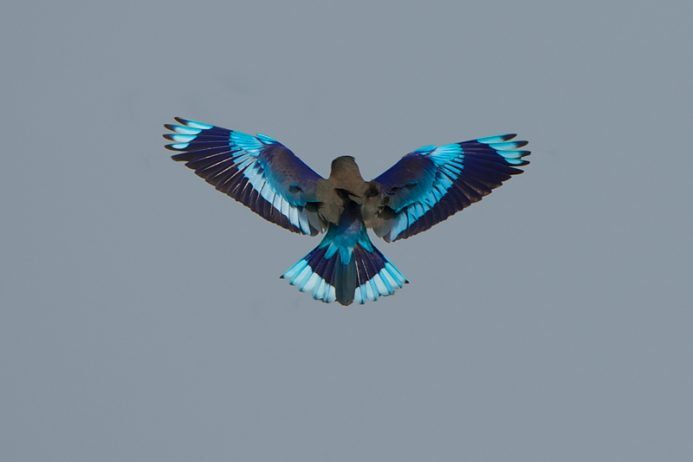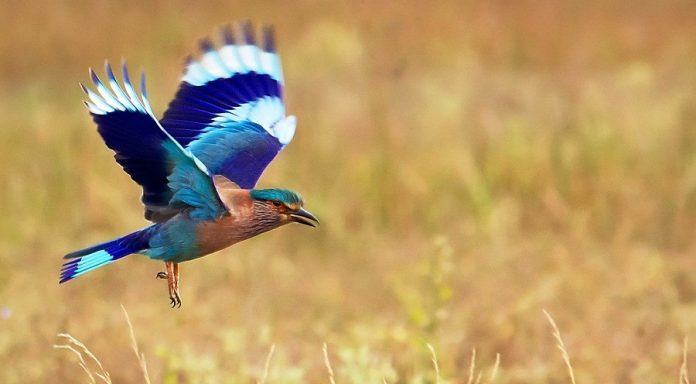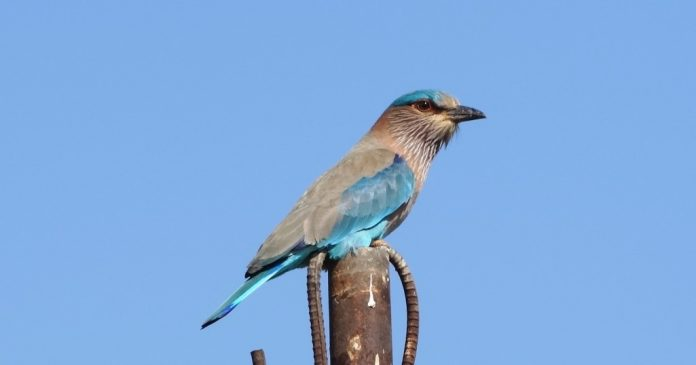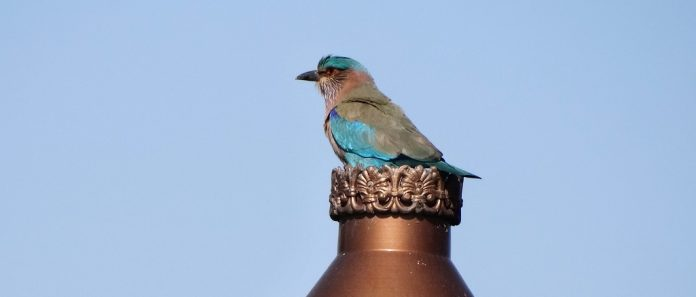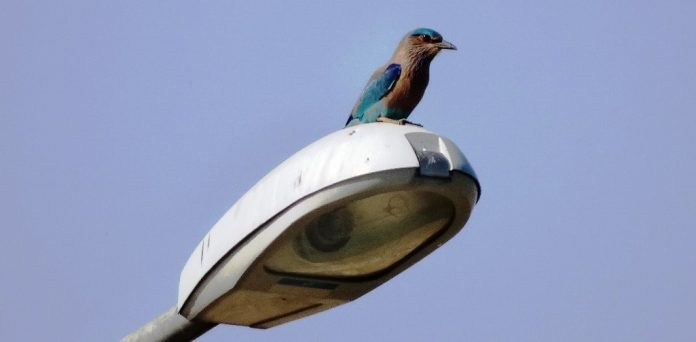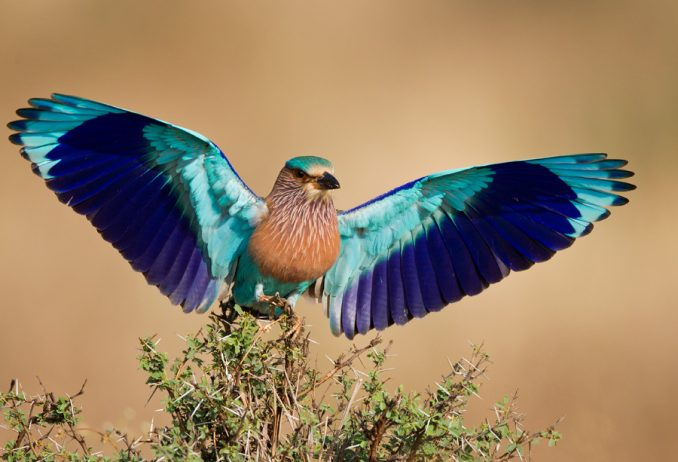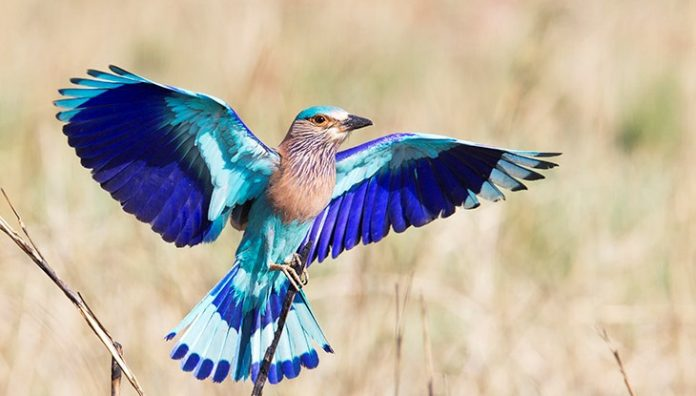The Indian Roller, also known as “paala pitta” in Telugu, is a bird belonging to the roller family. It has three subspecies, with the nominate form found in areas stretching from West Asia to India’s north, while the “indicus” subspecies is mainly found in peninsular India and Sri Lanka.
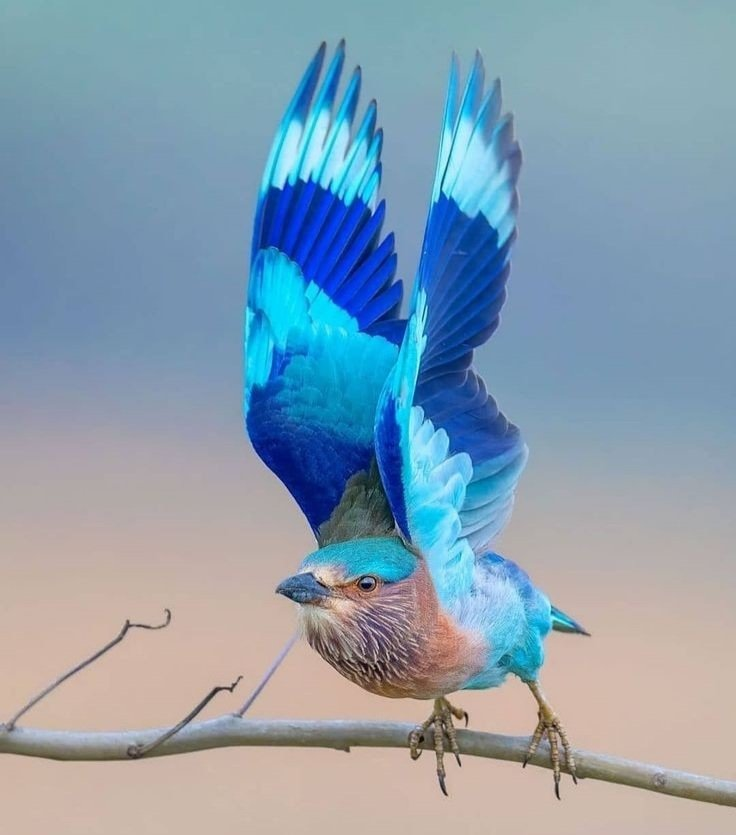
The Indian roller bird has two different forms, with the southern form sporting a darker reddish collar on its hind neck, while the nominate form lacks this feature. The race “affinis”, found in parts of northeastern India and Southeast Asia such as Thailand, Myanmar, and Indo-china, is sometimes considered a distinct species, but in the Indian region it is known to intergrade with benghalensis. The “affinis” form is larger, darker, and has a purplish-brown, un-streaked face and breast, along with under-wing covers in a deeper shade of blue. Indian rollers can be found in various parts of Asia, as well as on the islands of Lakshadweep and “The Maldive Islands” in Southeast Asia. They typically inhabit cultivated areas, thin forests, and grasslands, and are often spotted resting on electric wires by the roadside or perched on prominent bare trees and wires.
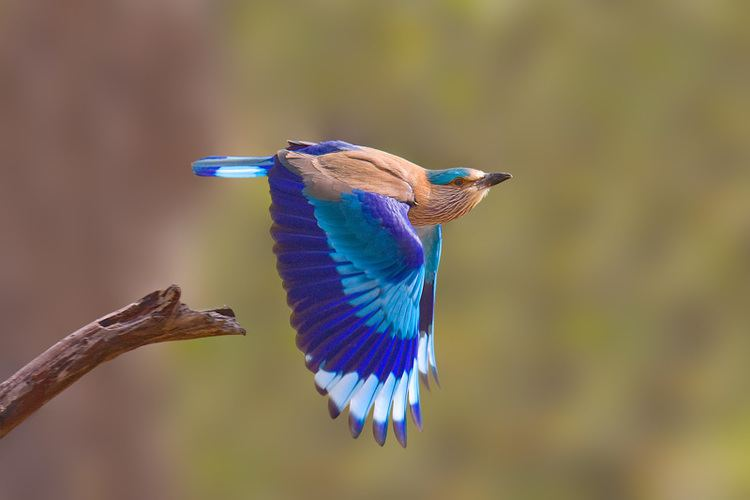
The Indian Roller bird is known to swoop down to the ground to catch insects, arachnids, small reptiles such as Calotes versicolor and snakes, and amphibians for their prey. They are attracted to fires and tractors that disturb invertebrates. These birds have been observed in densities of approximately 50 birds per square kilometer in agricultural areas in southern India. Their feeding habits primarily consist of ground insects, with beetles making up half of their diet and grasshoppers and crickets making up twenty-five percent. The Indian Roller’s feeding patterns and habitat usage is similar to that of the black drongo. During the summer, they may also feed in the evening and use artificial lights to attract insects. The Hindi name for this bird is Neel Kanth, which translates to “blue throat.”
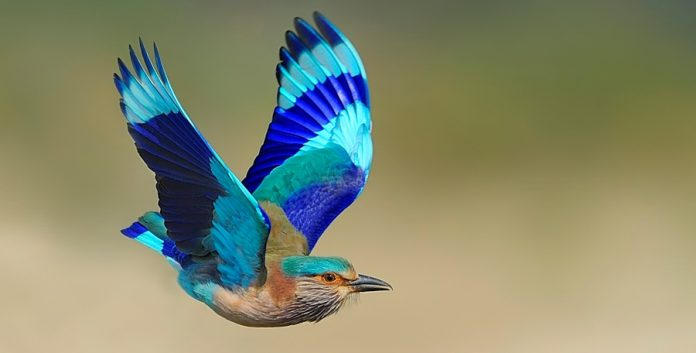
These birds have a peculiar attraction towards swarms of winged termites, and it’s not uncommon to spot around 40 of them perched on a 70-meter stretch of electric wires. Unfortunately, their feeding habits near roadsides often lead to collisions with traffic. As a result, there has been a noticeable decrease in the sightings of these birds along the roadsides in northern India. This particular bird is known for its impressive aerial maneuvers, hence its name. Breeding season starts from March to June, with southern India seeing the action earlier than other regions. When perched, the bird displays various behaviors such as bill-up displays, bowing, “allopreening,” wing drooping, and tail fanning.
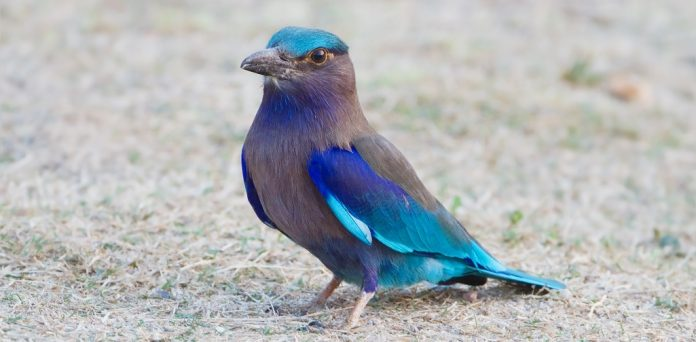
Woodpeckers and wood-boring insects tend to create holes in palm trees that are often used as nesting spots. In addition to this, nest cavities can also be formed by tearing open decayed tree trunks or cavities in structures. These cavities usually have no lining and are mostly made up of wood debris.

The average Indian roller clutch consists of three to five eggs that are typically broad oval or almost round in shape and white in color. The eggs are incubated by both male and female birds for approximately 17 to 19 days. After about a month, the young bird leaves the nest. It’s worth mentioning that almost 80% of the eggs hatch and successfully fledge. When it comes to vocalization, the Indian roller produces a rough “chack” sound, similar to that of a crow, as well as other noises such as metallic “boink” calls.
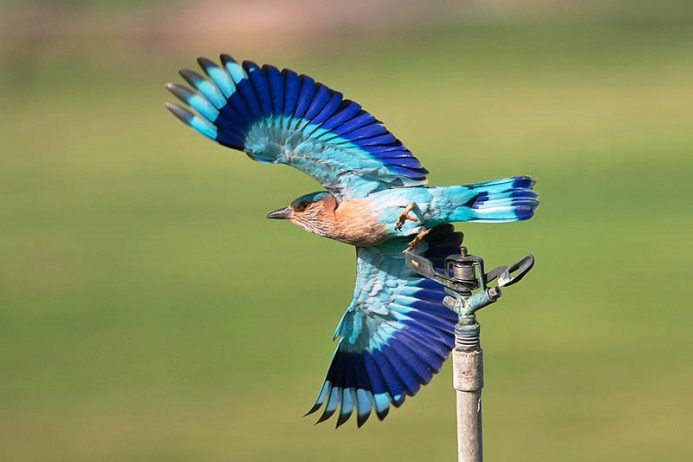
During their breeding season, the Indian roller is known for their loud calls and can often be spotted taking a dip in bodies of water by diving headfirst, which can be mistaken as fishing. Although they may occasionally try their luck at fishing, they are not known to be expert fishermen. Interestingly, people used to feed cows with chopped feathers from Indian rollers mixed with grass, believing it would enhance their milk production. This beautiful bird holds a special place in the hearts of several Indian states such as Bihar, Andhra Pradesh, Telangana, Karnataka, and Odisha, as they have declared it as their state bird.
